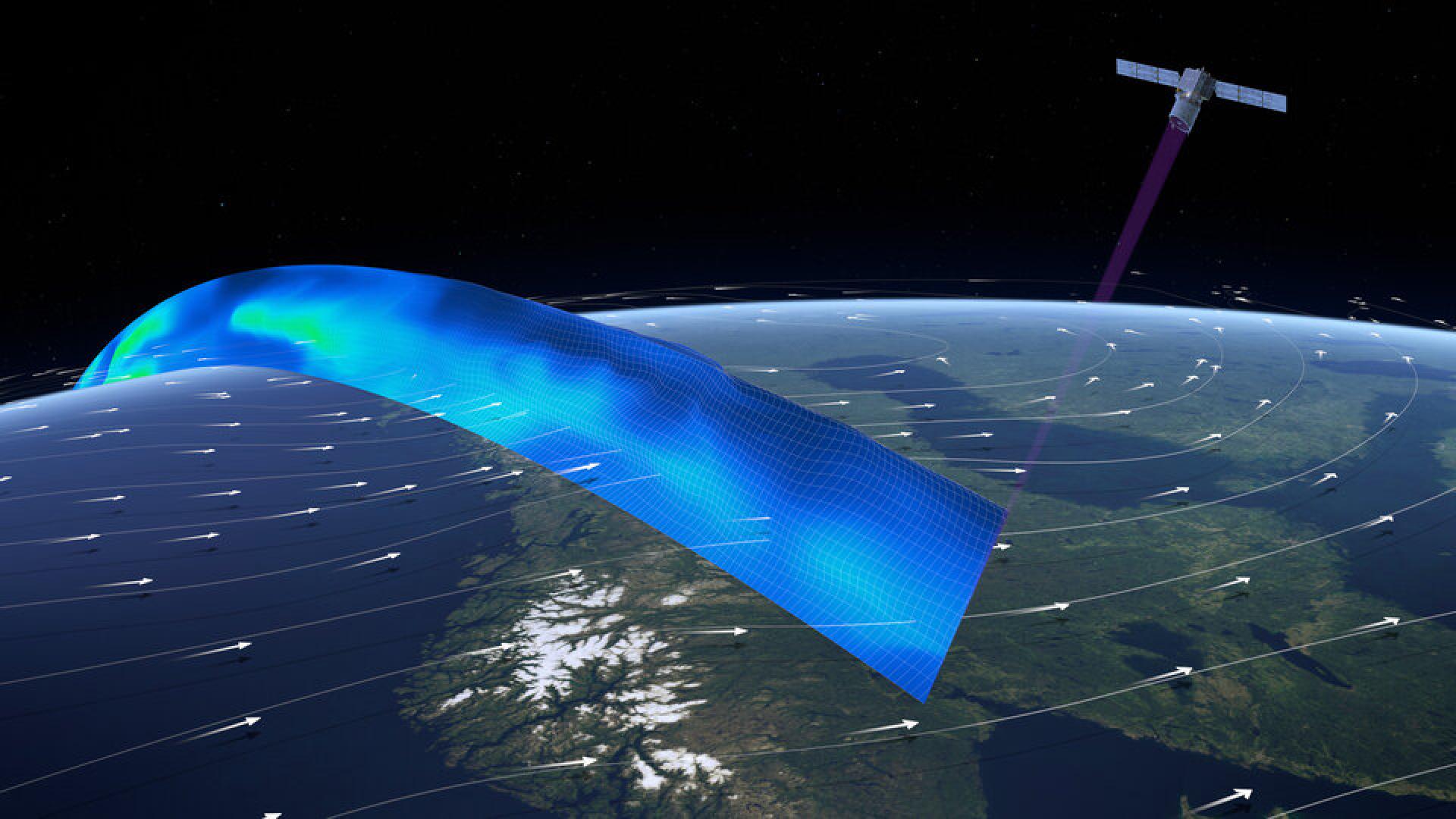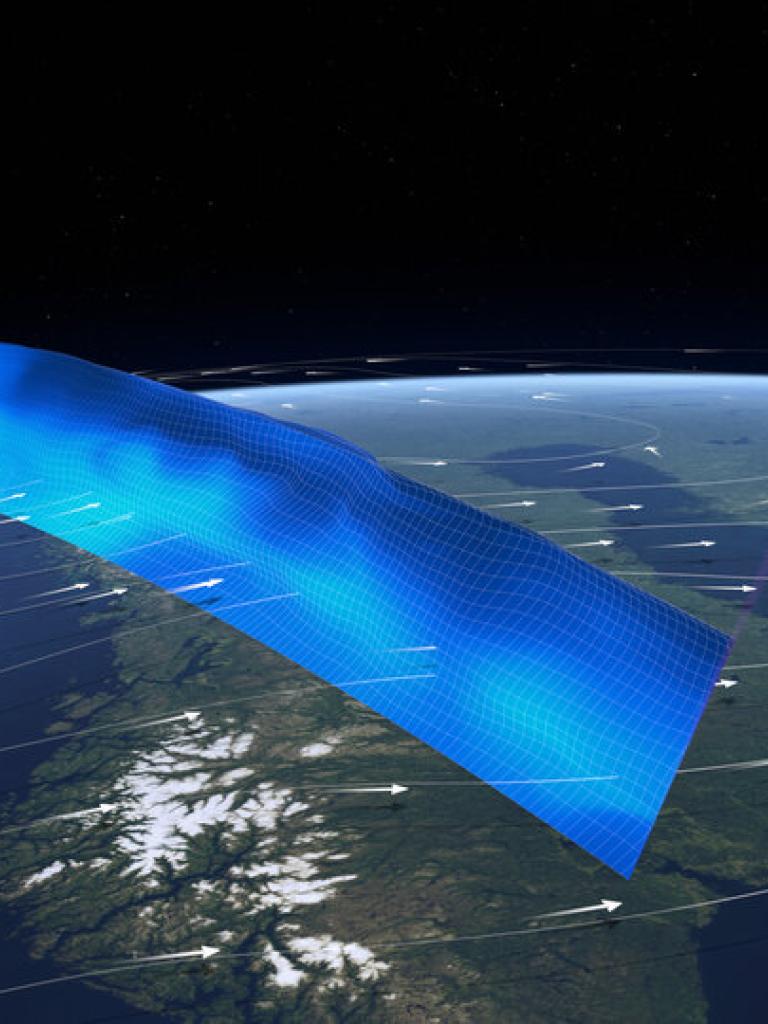
EUMETSAT redistributes novel real-time wind data
EUMETSAT redistributes novel, real-time wind data to probe the weather community on the value of a possible operational Doppler Lidar mission


Today, EUMETSAT started to make novel observations about the vertical distribution of wind available to national meteorological services for use in weather forecasting.
28 September 2020
12 May 2020
These observations are from the first Doppler LIDAR (light detection and ranging) instrument in space aboard Aeolus, a European Space Agency (ESA) Earth Explorer satellite launched in August 2018.
Aeolus’s Aladin instrument emits pulses of ultraviolet light from a laser and measures the Doppler shift of signal backscattered by the different layers of the atmosphere to deliver vertical profiles of wind in the lowest 30km.

The European Centre for Medium-Range Weather Forecasts (ECMWF) and the French, German, UK and Norwegian meteorological services have assessed the quality of the data and already measured positive impacts on numerical weather prediction on a global scale.
EUMETSAT agreed with ESA to redistribute Aeolus near-real-time wind products to European national weather services and other users of its EUMETCast data broadcast system and to the worldwide meteorological community via the Global Telecommunication System of the World Meteorological Organisation (WMO).
"The ECMWF and weather services involved from the outset in the ESA mission have already shown a positive impact of Aeolus data on numerical weather prediction," EUMETSAT Director-General Alain Ratier said.
"We now push Aeolus data in near-real time to the 4,000 users of EUMETCast and to the full WMO community, to give the opportunity to every forecast centre to familiarise with the novel data and measure their value."
"This user feedback, together with the results of ESA's on-going design studies, will support the planning of a possible operational Doppler Lidar mission, adding a wind profiling capability to the next generation of our EPS-SG polar system."





